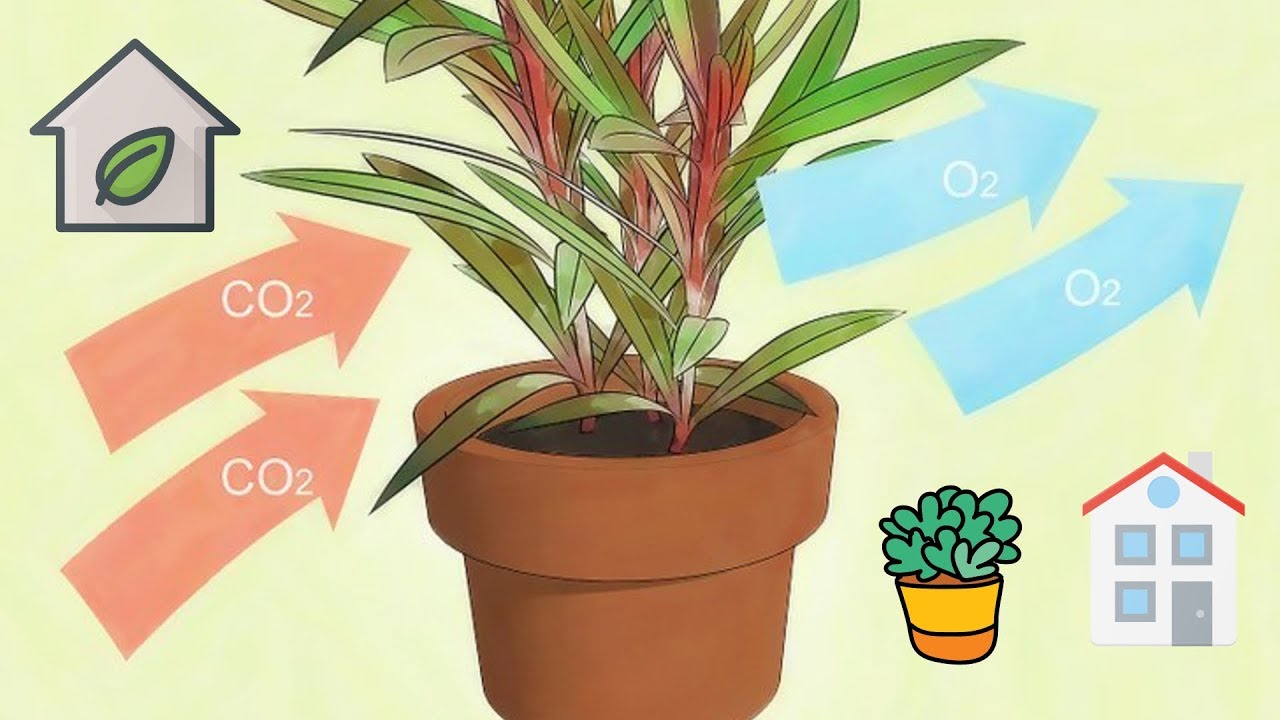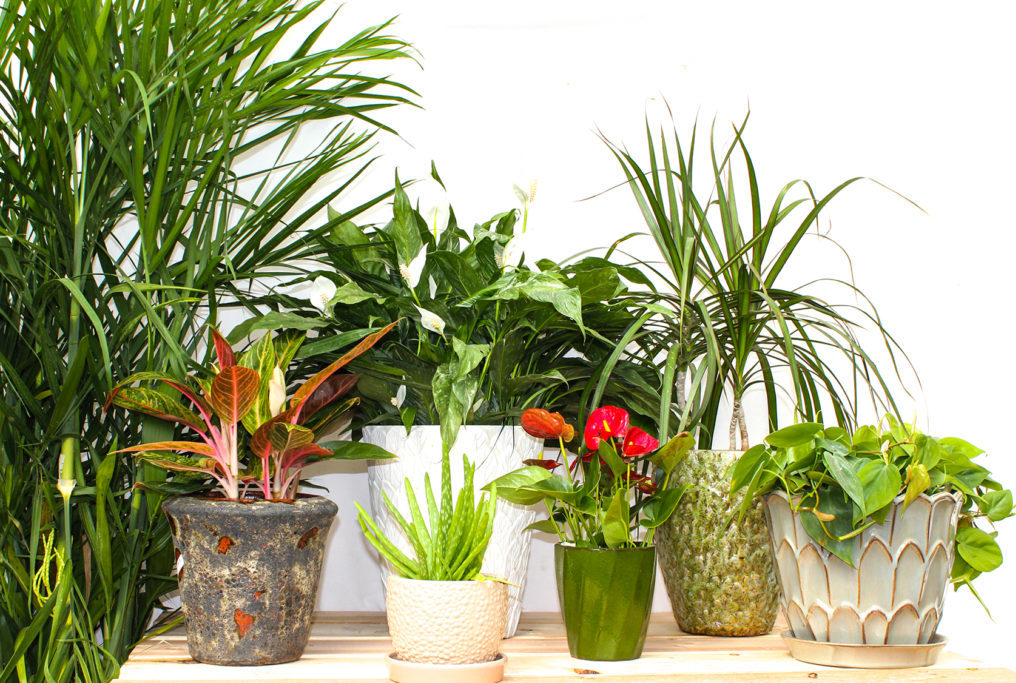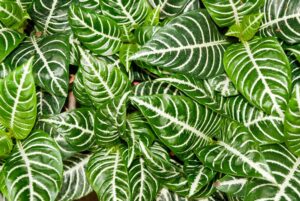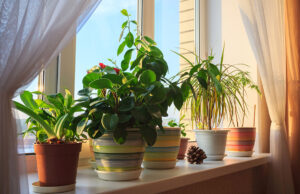Indoor air quality has become a significant concern in today’s homes, and air-purifying houseplants offer a natural, effective solution. These plants do more than just add greenery to your living space—they help remove toxins from the air, improve overall air quality, and contribute to a healthier indoor environment.
On This Page
What are air-purifying houseplants?
Air-purifying houseplants are species that help to clean indoor air by absorbing pollutants through their leaves and roots. Common indoor air pollutants, such as benzene, formaldehyde, and trichloroethylene, are often found in household products, building materials, and furniture. These plants can mitigate these toxins, making the air cleaner and healthier to breathe.
Importance of Indoor Air Quality
Maintaining good indoor air quality is essential for overall health and well-being. Poor air quality can lead to a range of health issues, including respiratory problems, headaches, and fatigue. According to the Environmental Protection Agency (EPA), indoor air can be up to five times more polluted than outdoor air. Integrating air-purifying houseplants into your home can help reduce these risks and create a more pleasant living environment.
Key Benefits of Air-Purifying Houseplants:
- Reduction of Indoor Pollutants: They help remove harmful substances like benzene, formaldehyde, and xylene from the air.
- Improved Humidity: Plants release moisture into the air through a process called transpiration, which can help alleviate dry skin and respiratory irritation.
- Enhanced Mood and Productivity: Studies have shown that indoor plants can improve mood, reduce stress, and increase productivity.
Facts and figures:
- NASA Clean Air Study: According to NASA’s research, houseplants can reduce indoor air pollutants by up to 87% in just 24 hours.
- Pollutant Reduction: The peace lily, for example, has been shown to reduce benzene levels by up to 60% in controlled environments.
How Air-Purifying Houseplants Work
Air-purifying houseplants not only beautify your home but also actively contribute to a healthier indoor environment. Understanding how these plants work to purify the air can help you select the right ones for your space and ensure they are maintained properly.
Mechanisms of Air Purification
Air-purifying houseplants clean the air through several processes, including:
- Absorption of Pollutants: Plants absorb harmful chemicals from the air through their leaves and roots. The pollutants are then broken down into less harmful substances. For example, formaldehyde is converted into harmless sugars.
- Root Zone Microbial Action: In the soil surrounding the plant roots, beneficial microbes decompose and neutralize airborne toxins. This process, known as phytoremediation, involves the breakdown of contaminants into less toxic forms.
- Transpiration: Through transpiration, plants release moisture into the air, which can help increase indoor humidity. This not only benefits respiratory health but also helps in the dispersion of essential oils that some plants produce.
Scientific Background
Several studies have documented the effectiveness of air-purifying houseplants.
- NASA Clean Air Study: Conducted in the late 1980s, this study found that certain houseplants could remove up to 87% of indoor air pollutants within 24 hours. Plants such as the snake plant and spider plant were identified as highly effective in purifying the air.
- Journal of Environmental Horticulture: Research published here demonstrated that houseplants could significantly reduce indoor levels of benzene, formaldehyde, and trichloroethylene.
Examples of Effective Air-Purifying Processes
| Plant | Pollutant | Mechanism |
|---|---|---|
| Snake Plant | Formaldehyde, Benzene | Absorption through leaves and roots |
| Spider Plant | Carbon Monoxide, Xylene | Absorption and microbial action |
| Peace Lily | Benzene, Trichloroethylene | Absorption and microbial action |
Criteria for Choosing the Best Air-Purifying Houseplants
Selecting the right air-purifying houseplants for your home involves considering several key factors. Not all plants are equal in terms of their air-purifying capabilities or suitability for different environments. Here’s a detailed guide to help you choose the best air-purifying houseplants for your needs.
Factors to Consider
- Light Requirements: Different plants have varying light needs. Some thrive in low-light conditions, while others require bright, indirect light. Assess the lighting conditions of your space before choosing a plant.
- Ease of Care: Consider how much time and effort you can invest in plant care. Some air-purifying houseplants are low-maintenance and forgiving, while others require more attention and specific conditions.
- Size and Growth: Think about the size of the plant in relation to your space. Some plants grow tall and need ample room, while others remain compact and fit well in small areas.
- Air-Purifying Capabilities: Look for plants that are proven to effectively remove indoor pollutants. Check for research or expert recommendations to find plants with strong air-purifying properties.
- Potential Allergies: Be aware that some plants can trigger allergies or irritate sensitive individuals. Opt for hypoallergenic plants if you or your household members have allergies.
Plant Selection Tips
- Match plant needs with your home environment: Choose plants that suit your home’s lighting conditions and humidity levels. For example, if you have low light, consider plants like the snake plant or ZZ plant.
- Consider Maintenance: If you prefer low-maintenance plants, opt for hardy varieties such as the spider plant or pothos. These are resilient and require minimal care.
- Evaluate Growth Space: Ensure the plant’s mature size fits well in your intended space. Compact plants like the aloe vera are suitable for small areas, while larger plants like the rubber tree need more room.
Examples of Suitable Air-Purifying Houseplants
| Plant | Light Requirement | Care Level | Size | Air-Purifying Capabilities |
|---|---|---|---|---|
| Snake Plant | Low to Bright Indirect | Low | Medium | Formaldehyde, Benzene |
| Spider Plant | Bright Indirect | Low | Small | Carbon Monoxide, Xylene |
| Peace Lily | Low to Bright Indirect | Moderate | Medium | Benzene, Trichloroethylene |
| Boston Fern | Bright Indirect | Moderate | Medium | Formaldehyde, Benzene |
| Aloe Vera | Bright Indirect | Low | Small | Formaldehyde, Benzene |
Top 5 Air-Purifying Houseplants
To help you improve indoor air quality effectively, we’ve compiled a list of the top 5 air-purifying houseplants. These selections are known for their impressive air-cleaning abilities, ease of care, and suitability for various indoor environments.
1. Snake Plant (Sansevieria)
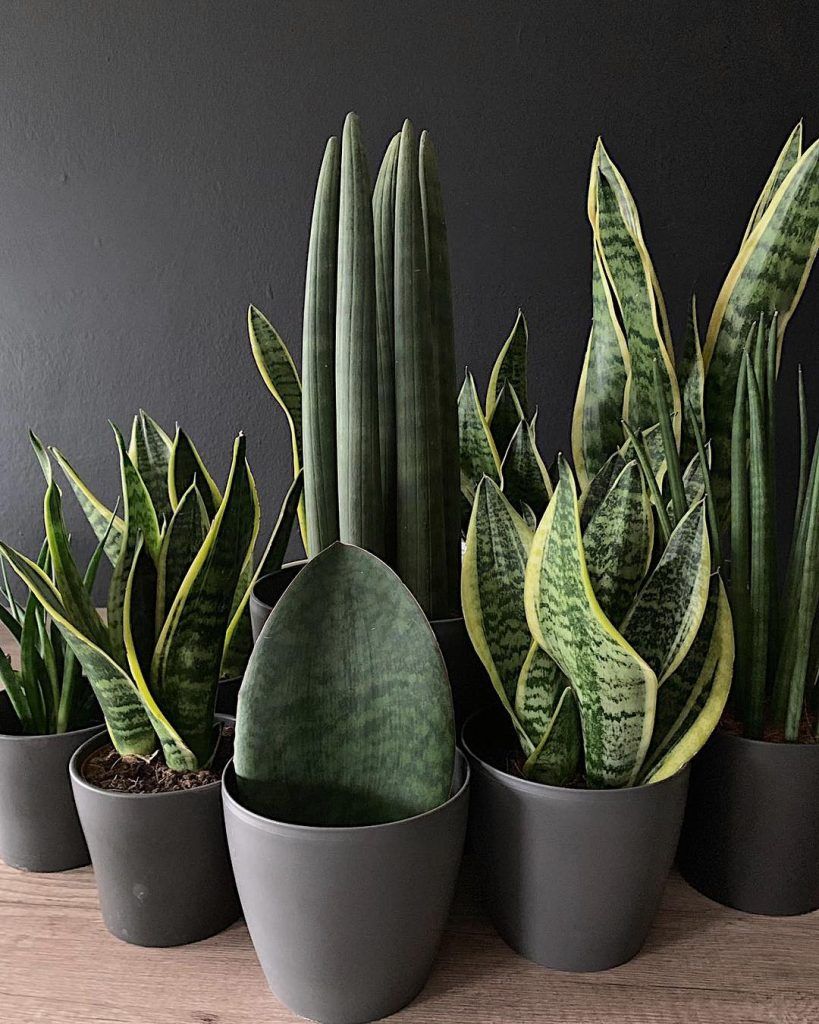
Benefits
- Air-Purifying Properties: Snake plants are highly effective at removing pollutants like formaldehyde, benzene, and xylene. They are also known for their ability to produce oxygen at night, which can help improve sleep quality.
- Durability: They are incredibly resilient and can tolerate low-light conditions and infrequent watering, making them ideal for beginners.
Care Tips
- Light: Thrives in low to bright indirect light. Avoid direct sunlight, which can scorch the leaves.
- Watering: Water sparingly; allow the soil to dry out completely between waterings. Overwatering can lead to root rot.
- Maintenance: Wipe leaves occasionally to remove dust and improve their air-purifying efficiency.
2. Spider Plant (Chlorophytum comosum)
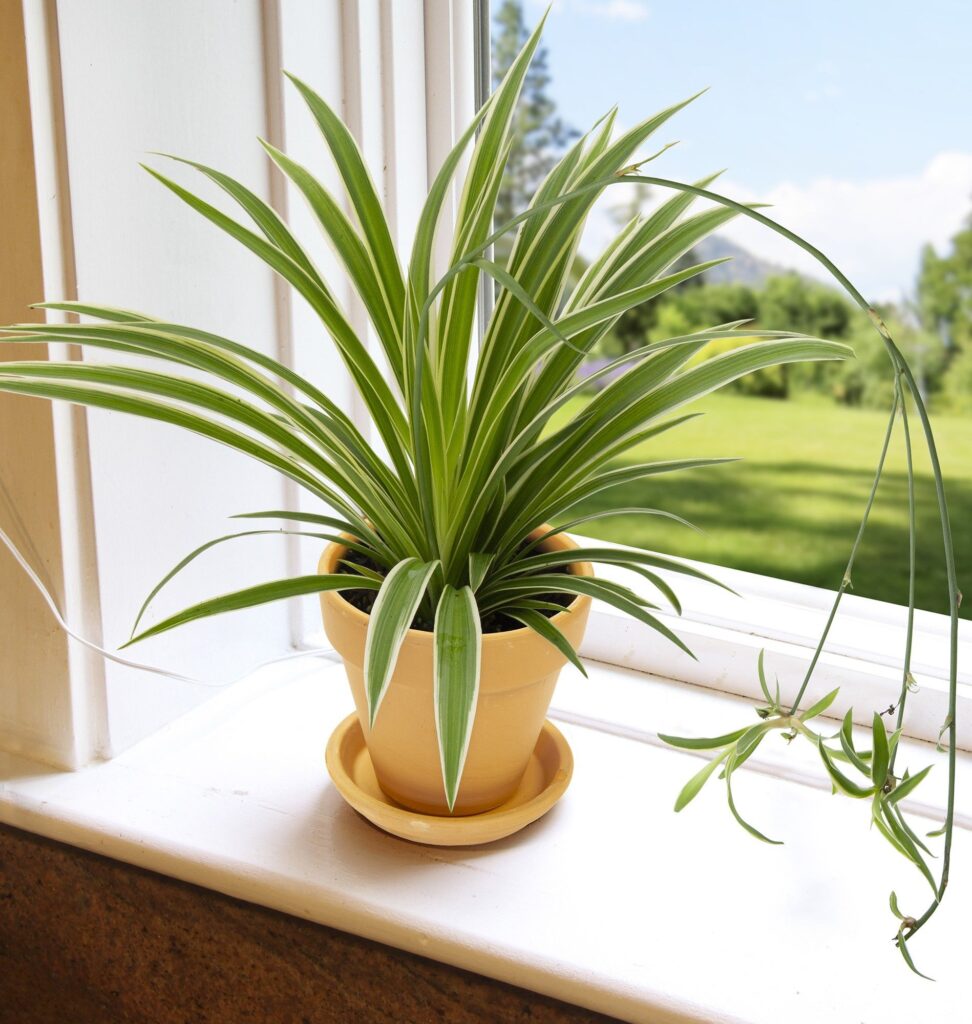
Benefits
- Air-Purifying Properties: Effective at removing carbon monoxide, xylene, and formaldehyde from the air. Spider plants are also known for their ability to increase indoor humidity.
- Propagation: Produces “babies” or offshoots that can be easily propagated, allowing you to expand your plant collection or share with others.
Care Tips
- Light: Prefers bright, indirect light but can adapt to lower light conditions.
- Watering: Keep the soil moist but not soggy. Allow the top inch of soil to dry out between waterings.
- Maintenance: Regularly trim brown tips and remove old or dead leaves to keep the plant healthy and attractive.
3. Peace Lily (Spathiphyllum)
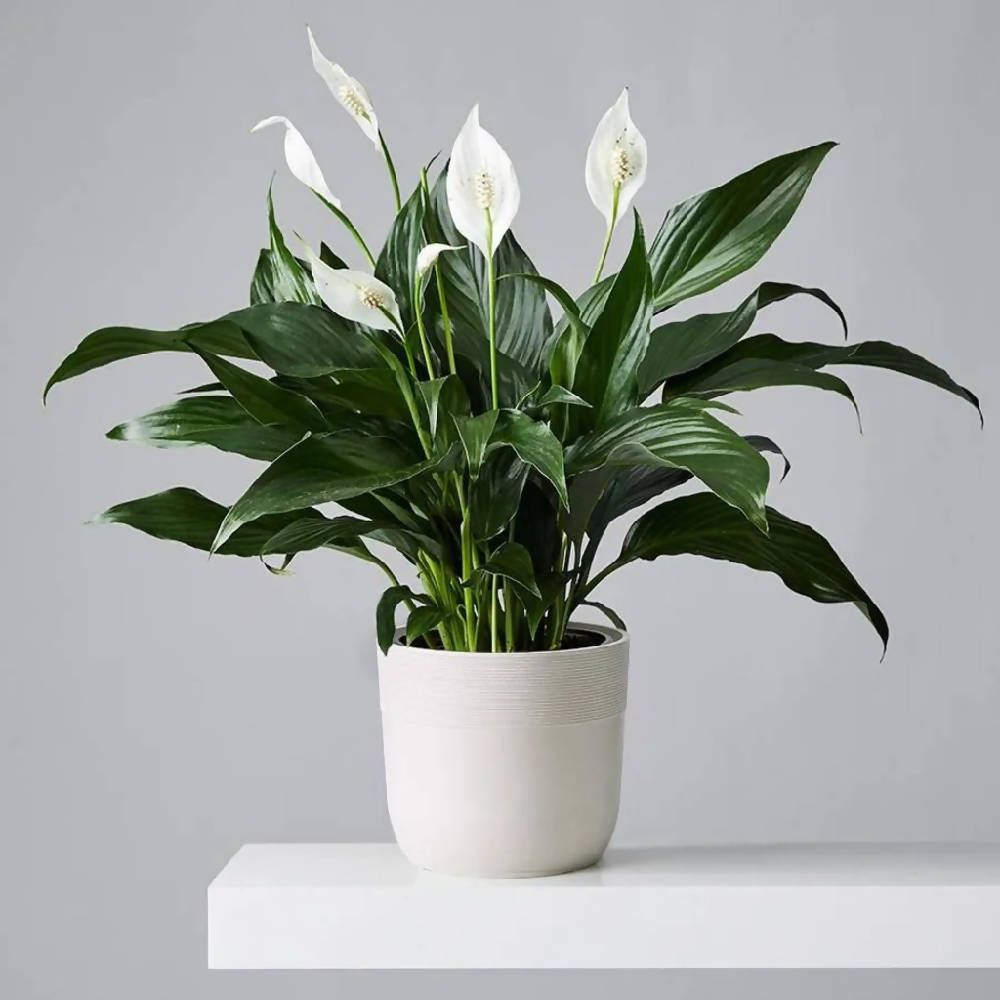
Benefits
- Air-Purifying Properties: Known for removing pollutants like benzene, trichloroethylene, and formaldehyde. The peace lily’s elegant white flowers also enhance indoor aesthetics.
- Humidity: adds moisture to the air through transpiration, which can be beneficial for dry indoor environments.
Care Tips
- Light: Grows best in low to bright indirect light. Avoid direct sunlight, which can cause leaf burn.
- Watering: Keep the soil consistently moist but not waterlogged. Water when the top inch of soil feels dry.
- Maintenance: Remove yellow or brown leaves regularly to promote new growth and maintain plant health.
4. Boston Fern (Nephrolepis exaltata)
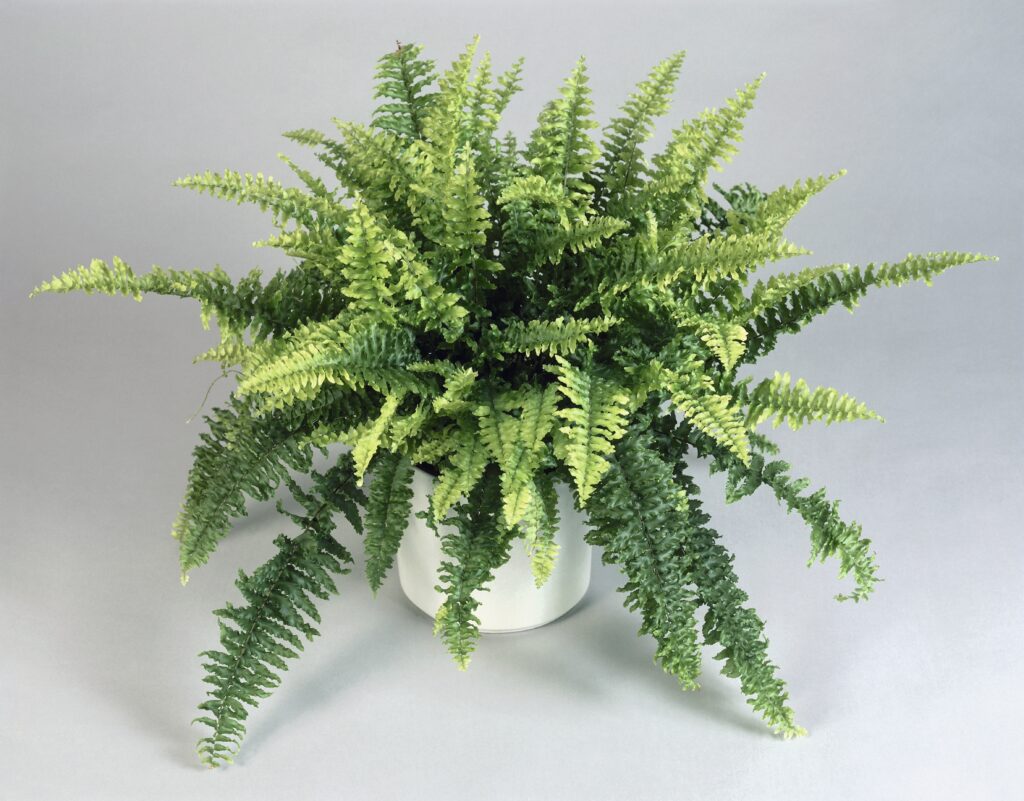
Benefits
- Air-Purifying Properties: Effective at removing formaldehyde and benzene. Boston ferns are also known for their ability to increase humidity levels in the air.
- Aesthetics: Its lush, feathery fronds add a touch of natural elegance to any indoor space.
Care Tips
- Light: Prefers bright, indirect light. Protect from direct sunlight, which can dry out the fronds.
- Watering: Keep soil consistently moist. Boston ferns thrive in high humidity, so consider misting the leaves or placing the plant on a pebble tray with water.
- Maintenance: Regularly trim dead fronds and ensure good air circulation to prevent fungal diseases.
5. Aloe Vera (Aloe barbadensis)
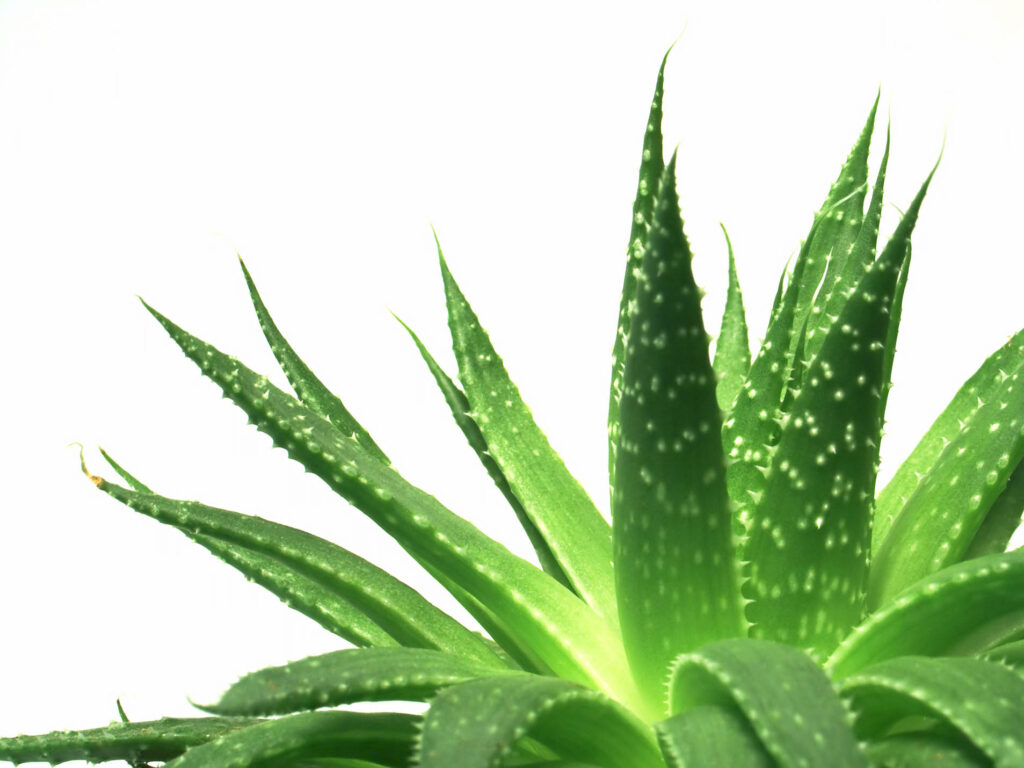
Benefits
- Air-Purifying Properties: Known for its ability to remove formaldehyde and benzene. Aloe vera also has medicinal properties, with gel that can be used to soothe minor burns and skin irritations.
- Low maintenance: It is very easy to care for, making it a great choice for those new to indoor gardening.
Care Tips
- Light: Thrives in bright, indirect light. Can also tolerate some direct sunlight.
- Watering: Allow soil to dry out completely between waterings. Water less frequently during the winter months.
- Maintenance: Clean the leaves occasionally and remove any damaged or dried-out leaves to keep the plant healthy.
How to Care for Air-Purifying Houseplants
Caring for air-purifying houseplants involves understanding their specific needs and ensuring they thrive in your indoor environment. Proper care not only helps these plants maintain their air-cleaning abilities but also ensures they grow healthily and look their best.
General Care Guidelines
- Light:
- Bright Indirect Light: Most air-purifying houseplants prefer bright, indirect light. This means placing them near windows where they receive filtered light but are not exposed to direct sunlight, which can scorch the leaves.
- Low Light Adaptability: Some plants, like the snake plant, can tolerate low light conditions but may grow more slowly.
- Watering:
- Soil Moisture: Check the soil moisture regularly. Overwatering is a common issue and can lead to root rot, so ensure the soil has dried out slightly before watering again.
- Watering Frequency: Watering needs vary by plant. For instance, the spider plant prefers consistently moist soil, while the aloe vera requires less frequent watering, allowing the soil to dry completely between waterings.
- Soil:
- Well-Draining Soil: Use a well-draining potting mix to prevent water from pooling at the roots. A mix containing perlite or sand can improve drainage.
- Repotting: Repot your plants when they outgrow their containers or the soil becomes compacted. Typically, this is done every 1-2 years.
- Humidity:
- Humidity Levels: Some air-purifying plants, like the Boston fern, require higher humidity levels to thrive. Consider using a humidifier or placing a tray of water near the plant to increase humidity.
- Misting: For plants that need extra humidity, light misting of the leaves can be beneficial.
- Temperature:
- Ideal Range: Most indoor air-purifying plants prefer temperatures between 60 and 75°F (15 and 24°C). Avoid exposing them to drafts, sudden temperature changes, or extreme temperatures.
Common Issues and Solutions
- Yellowing Leaves:
- Cause: This could indicate overwatering, low light, or nutrient deficiencies.
- Solution: Adjust watering practices, ensure the plant is receiving adequate light, and consider feeding with a balanced fertilizer.
- Brown Tips:
- Cause: Brown tips are often a sign of underwatering, low humidity, or salt buildup from fertilizers.
- Solution: Increase watering frequency, raise humidity levels, and flush the soil with water to remove excess salts.
- Pests:
- Common Pests: Watch out for common pests such as spider mites, aphids, and mealybugs.
- Solution: Treat infestations with insecticidal soap or neem oil, and regularly inspect plants for signs of pests.
Maintenance Tips
- Regular Cleaning: Dust plant leaves occasionally with a damp cloth to ensure optimal air-purifying efficiency and allow for better light absorption.
- Pruning: Trim dead or yellowing leaves to promote healthy growth and prevent potential diseases.
Benefits Beyond Air Purification
While the primary benefit of air-purifying houseplants is their ability to enhance indoor air quality, they offer a range of additional advantages that contribute to a healthier and more enjoyable living environment. Let’s explore some of these benefits and how they positively impact your home and well-being.
Additional Benefits of Air-Purifying Houseplants
- Improved Mental Health and Well-Being
- Stress Reduction: Studies have shown that interacting with plants can reduce stress and anxiety. The presence of greenery in your home creates a calming atmosphere, which can improve your mood and overall mental health.
- Enhanced Productivity: A study published in the Journal of Environmental Psychology found that having plants in the workplace can boost productivity and creativity. This benefit extends to home offices and study areas as well.
- Increased Humidity
- Natural Humidifiers: Many air-purifying plants, such as the Boston fern and peace lily, release moisture into the air through transpiration. This added humidity can help alleviate dry skin, respiratory issues, and other problems associated with dry indoor air.
- Healthy Indoor Environment: Maintaining optimal humidity levels can also reduce the likelihood of issues such as static electricity and dry throat.
- Aesthetic Enhancement
- Decorative Appeal: Air-purifying houseplants add beauty and vibrancy to indoor spaces. They come in various shapes, sizes, and colors, allowing you to enhance the aesthetic of any room.
- Design Flexibility: Whether you prefer modern, minimalist, or traditional décor, there’s an air-purifying plant that can complement your interior design style. Use them as statement pieces or incorporate them into existing décor.
- Improved Sleep Quality
- Oxygen Production: Plants like the snake plant release oxygen at night, which can contribute to better sleep quality. Higher oxygen levels can help you fall asleep faster and enjoy more restful sleep.
- Relaxing Environment: The presence of plants in the bedroom can create a serene environment that promotes relaxation and sleep.
- Educational Value
- Learning Opportunity: Caring for houseplants can be a great educational experience for children and adults alike. It teaches responsibility, patience, and an appreciation for nature.
- Connection to Nature: Having plants in your home can foster a greater connection to the natural world, which is increasingly important in today’s urbanized society.
Table: Benefits of Air-Purifying Houseplants
| Benefit | Description | Examples of Plants |
|---|---|---|
| Stress Reduction | Plants help reduce stress and improve mental health. | Peace Lily, Spider Plant |
| Increased Humidity | Plants release moisture into the air, alleviating dryness. | Boston Fern, Bamboo Palm |
| Aesthetic Enhancement | Adds beauty and color to indoor spaces. | Aloe Vera, Snake Plant |
| Improved Sleep Quality | Plants like snake plants release oxygen at night. | Snake Plant, English Ivy |
| Educational Value | Teaches responsibility and appreciation for nature. | Any indoor houseplant |
Conclusion and Tips for Integration
Integrating air-purifying houseplants into your home can greatly enhance your indoor environment, improving air quality while providing numerous other benefits. Here’s a recap of the key points and some practical tips for incorporating these plants into your living space.
Summary of Key Points
- Air-Purifying Benefits: Air-purifying houseplants play a crucial role in removing indoor pollutants such as formaldehyde, benzene, and trichloroethylene. They help create a healthier living environment by filtering these harmful substances from the air.
- Choosing the Right Plants: Selecting the best air-purifying houseplants involves considering factors such as light requirements, ease of care, and plant size. Plants like the snake plant, spider plant, peace lily, Boston fern, and aloe vera are excellent choices for improving indoor air quality.
- Care and Maintenance: Proper care ensures that your air-purifying houseplants remain healthy and effective. This includes appropriate watering, light, soil conditions, and addressing common issues like pests or yellowing leaves.
- Additional Benefits: Beyond air purification, these plants offer stress reduction, increased humidity, aesthetic enhancement, improved sleep quality, and educational value.
Final Tips for Integration
- Strategic Placement: Place air-purifying houseplants in areas where they will have the greatest impact. For example, position them near windows for optimal light or in bedrooms to benefit from improved sleep quality. Consider placing a variety of plants in different rooms to enhance the overall air quality throughout your home.
- Decorative Use: Use plants to complement your home décor. Choose pots and planters that match your interior style and place plants in stylish stands or hang them to add visual interest.
- Routine Care: Establish a regular care routine to ensure your plants thrive. Set reminders for watering, check for pests, and clean leaves to maintain their air-purifying efficiency.
- Involve family: Make plant care a family activity. Involving children in watering and plant maintenance can be a fun and educational experience, fostering a greater appreciation for nature.
- Expand Your Collection: Once you’ve successfully integrated air-purifying houseplants, consider expanding your collection. Experiment with different species and arrangements to find what works best for your space.
By following these tips and understanding the numerous benefits of air-purifying houseplants, you can create a more vibrant, healthy, and welcoming home environment. Happy planting!
